All You Need to Know About Sarcoma
Table of Contents
What is Sarcoma?
Sarcoma is a cancer of the body’s connective tissues, which include fat, muscle, nerves, tendons, and ligaments.
Sarcomas are extracted into different subgroups based on the type of cells within them. There are more than 20 types of sarcoma based on cell lineage. One common feature of sarcomas is that they often contain areas of dead tissue (called tumour necrosis).
Sarcoma can show symptoms at any age, but most cases are diagnosed in people aged 20 to 40. Sarcomas often occur in the arms or legs but can also develop in other body parts, including the pelvis and abdomen.
Types of Sarcoma
There are two main types of sarcomas:
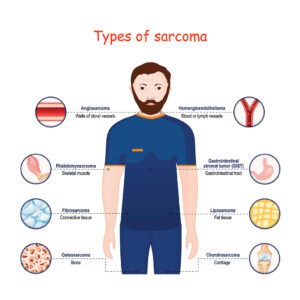
- Soft tissue sarcomas — These cancers begin in muscle, fat or fibrous tissue, such as the connective tissue surrounding organs. The most common soft tissue sarcomas include malignant fibrous histiocytoma (also called malignant histiocytosis), liposarcoma, rhabdomyosarcoma and synovial sarcoma.
- Bone and joint sarcomas — These cancers begin in bone or cartilage cells. The most common types are osteosarcoma, chondrosarcoma and Ewing’s sarcoma (Ewing’s tumour).
Sarcoma Symptoms
Sarcoma cancer develops slowly. It often doesn’t cause symptoms until it has spread to nearby tissues or organs.
Sarcomas do have a few early symptoms, though, which may include:
- Pain or swelling in the area where the cancer started
- Swelling or lumps over bony areas
- Painful joints or hips
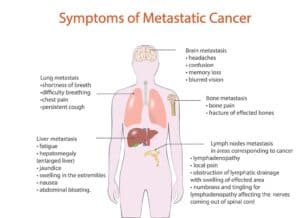
- Cancer that spreads to other parts of your body (metastasis)
- Painless lumps that may be firm or rubbery
- Fever, tiredness and weight loss if the cancer spreads (metastasizes) to other parts of the body
- Changes in sensation (numbness or tingling) in the affected area
- Difficulty moving the affected area
Causes of Sarcoma
A sarcoma can be caused by:
- Genetic mutations- A genetic mutation is a permanent change in a gene that’s passed from one generation to the next. Mutations can be inherited or acquired later in life due to exposure to harmful chemicals or radiation.
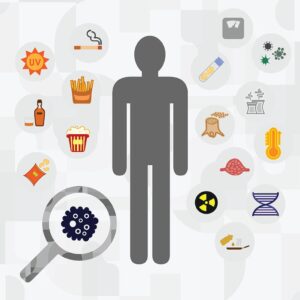
- Infections- Infections such as HPV (human papillomavirus) or EBV (Epstein-Barr virus) can cause certain types of sarcoma by affecting your immune system and causing it to attack healthy cells instead of foreign substances like viruses and bacteria.
- Radiation therapy exposure- Radiation therapy uses high-energy rays to kill cancerous cells and shrink tumours. It’s often used with surgery and chemotherapy to treat certain types of cancer, including sarcoma. Unfortunately, radiation therapy may sometimes cause healthy cells to mutate into cancer cells, leading to secondary cancers like sarcomas if not treated later down the road.
Risk factors in Sarcoma
A sarcoma is not a single disease but a term that describes any type of cancer that develops in the body’s soft tissue. Soft tissue refers to the muscles, tendons, fat and blood vessels. Risk factors for sarcoma include the following:
- Age: The incidence of sarcomas increases with age, especially after age 50.
- Genetic predisposition: Some individuals have an increased risk of developing some types of sarcoma because they inherited certain genes from their parents that make them susceptible to certain types of cancer.
- Hereditary conditions such as Turcot syndrome (glioblastoma multiforme) and Li-Fraumeni syndrome (osteosarcoma) are associated with an increased risk of developing certain types of sarcoma.
- Radiation exposure can increase your chances of getting mesothelioma or other cancers such as leukaemia or lymphoma.
Diagnosis of Sarcoma
There are many treatment options for sarcoma, including surgery, chemotherapy and radiation therapy. Treatment depends on the type of sarcoma you have, its size, location and grade (how much it has grown).
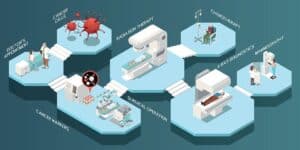
If the cancer has spread beyond the area of your original tumour, other treatments may be needed:
- Chemotherapy uses drugs to kill cancer cells. It may be given with other treatments or alone. It can be used to shrink a tumour before surgery or to destroy cancer cells that have spread to other parts of the body (metastases).
- Radiation therapy. Radiation therapy involves high-energy rays used to kill cancer cells and shrink tumours. It’s often used after surgery to kill any remaining cancer cells and relieve pain from bone metastases. Radiation therapy is also used for pain relief in patients with an advanced sarcoma that has not responded well to chemotherapy or radiation therapy.
- Targeted therapy. Targeted therapies are designed to attack specific molecules (or proteins) found in certain types of cancer cells without harming healthy cells as much as traditional chemotherapy drugs do. The targeted therapies may be given together with traditional chemotherapy drugs as part of multimodal treatment (treatment combining several different treatment types).
In Conclusion
Due to the diverse and often subtle nature of sarcoma symptoms, many patients are misdiagnosed and suffer until they are finally correctly diagnosed by a doctor. This is why early, accurate diagnosis is imperative.
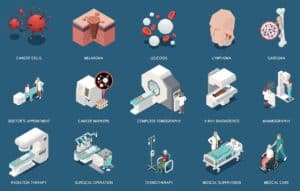
The earlier the sarcoma is discovered, the easier it is to treat and cure. To learn more about the best treatment options for sarcoma, visit the CK Birla Hospital or book an appointment with Dr. Vinay Samuel Gaikwad.
FAQs
1) Is sarcoma a serious cancer?
Yes, sarcoma is a serious cancer. It can be difficult to treat because it spreads quickly and grows in bones, fat, muscle and other organs. It also has a high rate of recurrence and metastasis (spread).
2) What type of cancer is sarcoma?
Sarcoma is a cancer that develops in the soft tissue. It can affect any area of the body, including muscles, tendons, fat, nerves and blood vessels.
3) How do you get sarcoma cancer?
The cause of sarcoma cancer is not known. It can be the outcome of a combination of factors, including:
- Genetic predisposition.
- Radiation in the area around the tumour. This can occur after radiation therapy for other cancers or after treatment with certain types of chemotherapy.
- Tumour viruses, including human papillomavirus (HPV), Epstein-Barr virus (EBV) and Kaposi sarcoma herpes virus (KSHV). However, most people with these viruses do not get sarcoma cancer.
4) What is the life expectancy with sarcoma?
The life expectancy with sarcoma depends on the type of sarcoma, where it has occurred, and whether it has spread to other parts of the body.
For example, patients with osteosarcoma have a survival rate of 70% five years after diagnosis, and those with Ewing’s sarcoma have a 5-year survival rate of 40%.




